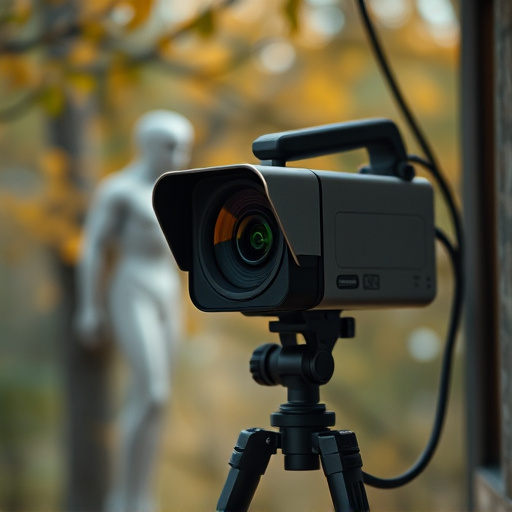Micro cameras for child protection offer remote monitoring capabilities but raise privacy concerns. Responsible deployment requires clear guidelines on consent, data storage, and access, balancing safety with rights. Strategic placement, collaboration, and ongoing evaluation ensure a balance between comprehensive coverage and respect for personal privacy. Discreet installation, encryption, regular maintenance, responsible footage review, and staff education are crucial for effective and ethical use.
“Uncovering peace of mind in an uncertain world, the covert monitoring system utilizing micro cameras for child safety has emerged as a powerful tool. This comprehensive guide delves into the heart of this technology, exploring its benefits and ethical considerations to ensure responsible implementation. From strategic placement techniques to step-by-step setup instructions, we empower professionals with the knowledge to create safe environments. Discover how micro cameras can enhance protection, offering insights without compromising privacy.”
- Understanding Micro Cameras for Child Safety: Benefits and Ethical Considerations
- Choosing the Right Placement Strategy: A Professional's Approach
- Implementing and Maintaining a Covert Monitoring System: Step-by-Step Guide
Understanding Micro Cameras for Child Safety: Benefits and Ethical Considerations
Micro cameras, often referred to as covert monitoring systems, have emerged as powerful tools for ensuring child safety in various settings. These tiny devices offer numerous benefits when it comes to safeguarding our youngest members of society. For parents and caregivers, micro cameras provide a sense of security by enabling remote monitoring through live video feeds. This is especially valuable in situations where direct supervision isn’t possible, such as during naptime or when an adult is temporarily away from the child’s vicinity.
However, along with their benefits comes a responsibility to consider ethical implications. The use of micro cameras for child protection raises privacy concerns and must be balanced against the need for transparency and trust. It’s crucial to establish clear guidelines on consent, data storage, and access to ensure that this technology serves its purpose without infringing upon individual rights and freedoms. Ethical deployment of these devices requires open dialogue between parents, caregivers, and relevant authorities to foster an environment where child safety is paramount while respecting personal privacy.
Choosing the Right Placement Strategy: A Professional's Approach
When implementing a covert monitoring system, especially for child protection using micro cameras, choosing the right placement strategy is paramount. Professionals should approach this task with a nuanced understanding of both the technology and the needs it aims to address. It involves careful consideration of factors like privacy, security, and the specific environment where the system will be deployed. For instance, in schools or daycares, micro cameras can be strategically placed in common areas to monitor activity without intruding on personal spaces.
The professional’s role is to assess the risk landscape, understand the dynamics of the setting, and select camera placements that maximize safety while minimizing disruption. This involves working closely with stakeholders—parents, educators, and administration—to ensure their comfort and buy-in. Additionally, maintaining a balance between comprehensive coverage and respect for privacy requires ongoing evaluation and adjustment of the system’s configuration.
Implementing and Maintaining a Covert Monitoring System: Step-by-Step Guide
Implementing and maintaining a covert monitoring system, such as micro cameras for child protection, requires careful planning and execution. Start by identifying areas that need surveillance, ensuring compliance with privacy regulations, and selecting discreet placement locations. Next, install the micro cameras using non-obtrusive methods to avoid detection while maintaining clear line-of-sight for optimal video quality. Once installed, configure the system to record footage securely, with encrypted storage options to protect sensitive data. Regular maintenance includes testing equipment, updating software, and ensuring power sources are reliable. Additionally, establish clear protocols for reviewing recorded footage while respecting privacy concerns. Lastly, educate relevant personnel on system usage, emphasizing responsible handling of video evidence.
The implementation of micro cameras for child protection offers a powerful tool for ensuring safety in various settings. By understanding the benefits and ethical considerations, choosing the right placement strategies, and following a comprehensive guide for installation and maintenance, professionals can harness the potential of covert monitoring systems effectively. This guide equips readers with the knowledge to create secure environments while respecting privacy, ultimately fostering a safer and more protected world for children.
